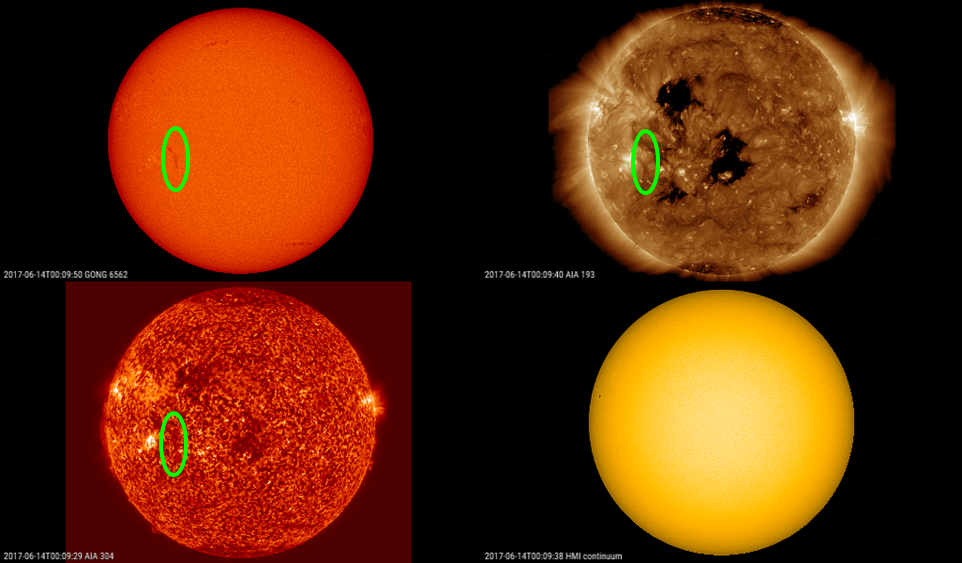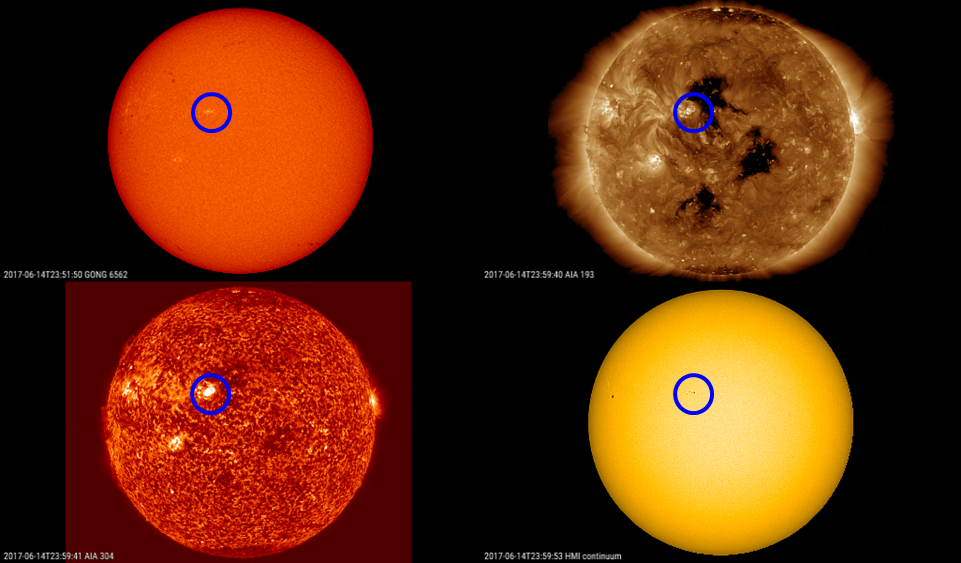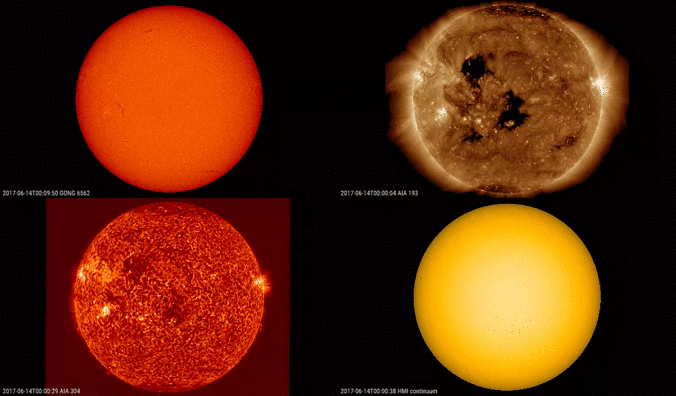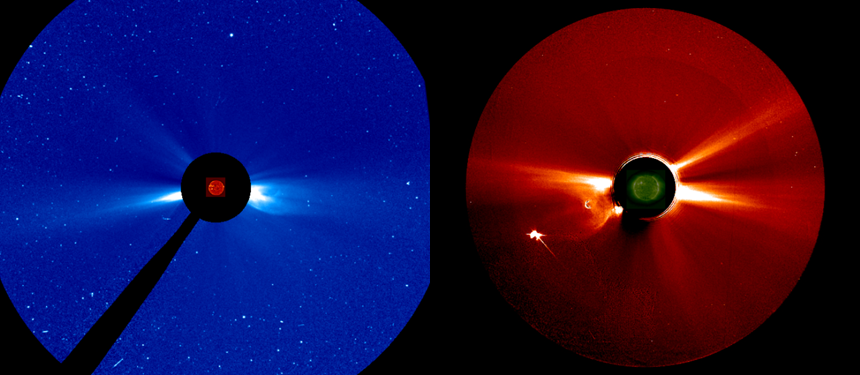Solar activity was again very low last week, with no C-class flares recorded. Only 2 active regions were observed: the stable region NOAA 2662, and a region that emerged on 14 June close to an equatorial coronal hole. That region (NOAA 2663) started to emerge shortly after the eruption of a filament on the southern hemisphere. A filament is a mass of charged particles squeezed between magnetic fields of opposite magnetic polarity.

The gif-animation (made with JHelioviewer) shows the filament eruption (indicated in green on the screenshot) and the subsequent emergence of NOAA 2663 (indicated in blue) in various wavelengths during 24 hours on 14 June. The upper-right images are made by SDO/HMI and show the Sun in white light (the "solar surface") at temperatures near 6.000 degrees. Tiny sunspot region NOAA 2663 shows up near the end of the clip. The upper-left images are from the GONG H-alpha network and shows the Sun's lower atmosphere ("chromosphere") in the red part of the visible spectrum (H-alpha; temperatures around 10.000 degrees). Comparing the screenshots at the beginning of the day (above) and the end of the day (below) clearly shows that the filament has disappeared.


The bottom series of images show more SDO pictures of the Sun , but now in extreme ultraviolet (EUV). Bottom-left are SDO/AIA 304 images showing the evolution of the events in the Sun's transition zone at temperatures near 80.000 degrees. Bottom-right are SDO/AIA 193 images showing the Sun's hot outer atmosphere ("corona") at temperatures near 1.3 million degrees. The dark holes are relatively small coronal holes (CHs) of which the associated particle streams affected the earth-environment from 16 till 19 June, resulting in minor storm conditions.

From the SDO/AIA 193 imagery, it is clear that little mass has been ejected into space, as very little coronal dimming (temporary darkening in the solar corona) can be seen. SOHO's wide angle coronagraph (LASCO/C3) did not feature any appreciable coronal mass ejection (CME) in the expected direction, i.e. to the east (left). The STEREO-A coronagraph COR2 does show a narrow CME right above a streamer to the west (right), but it is certainly not an obvious signature. Both images were taken around 18UT.





